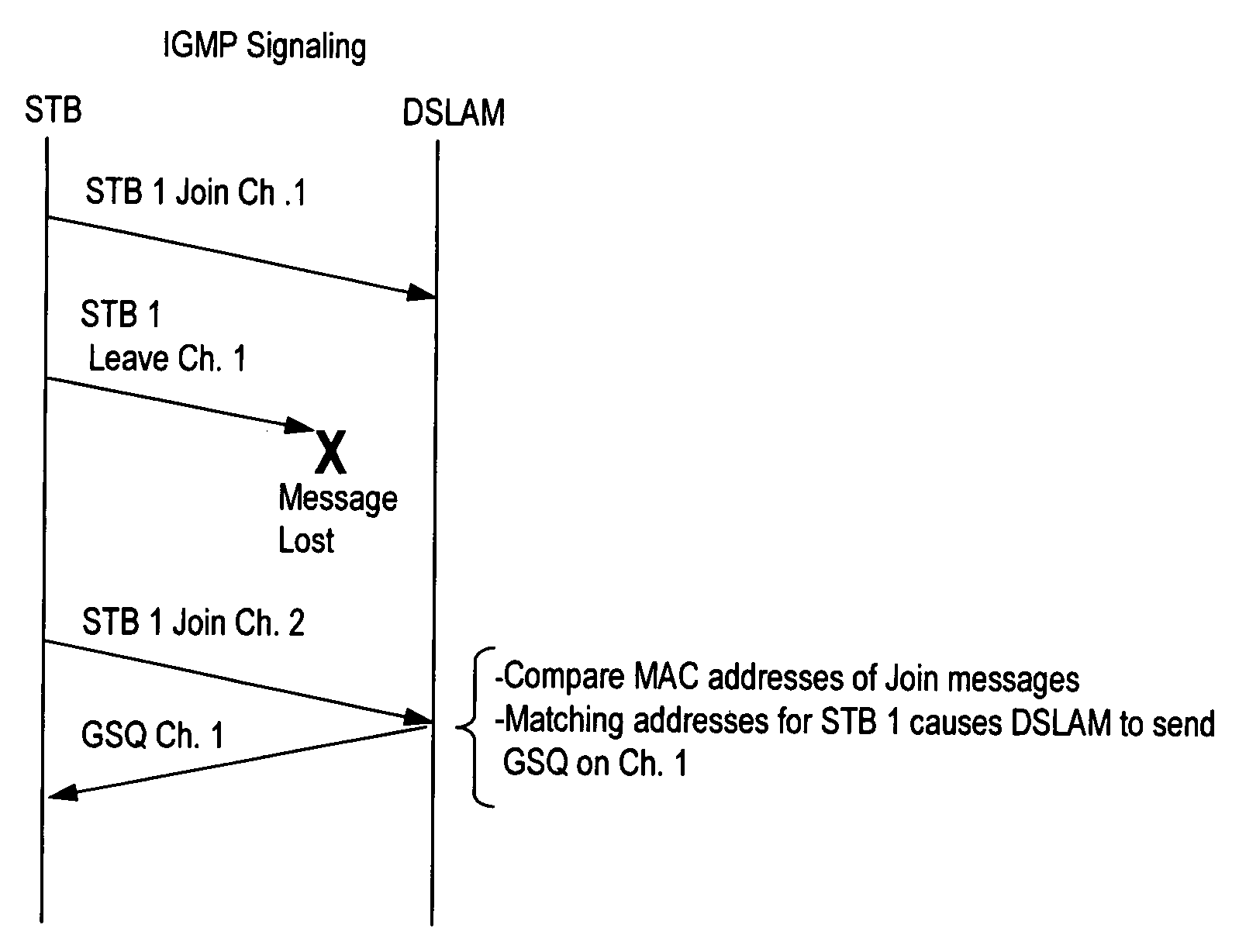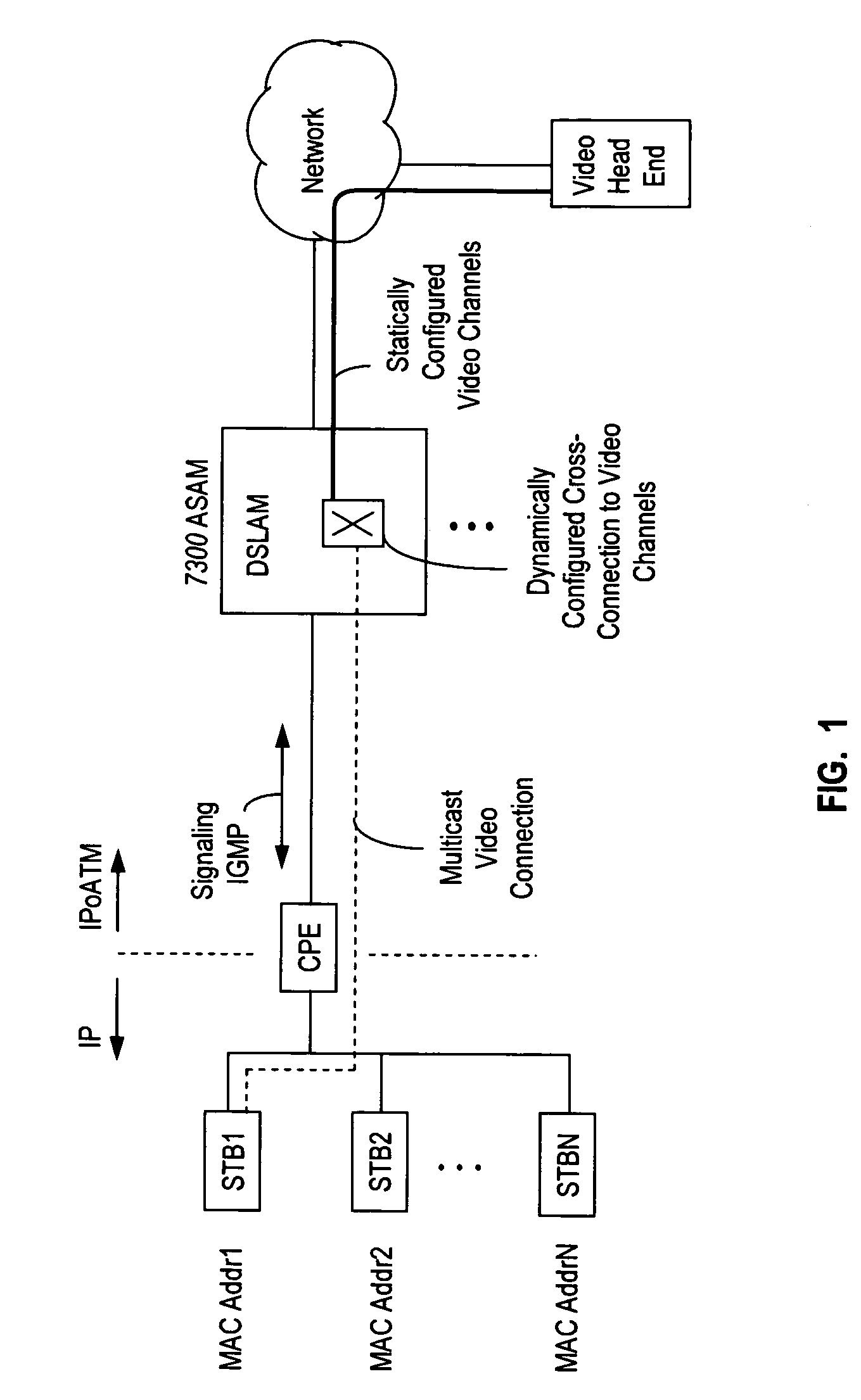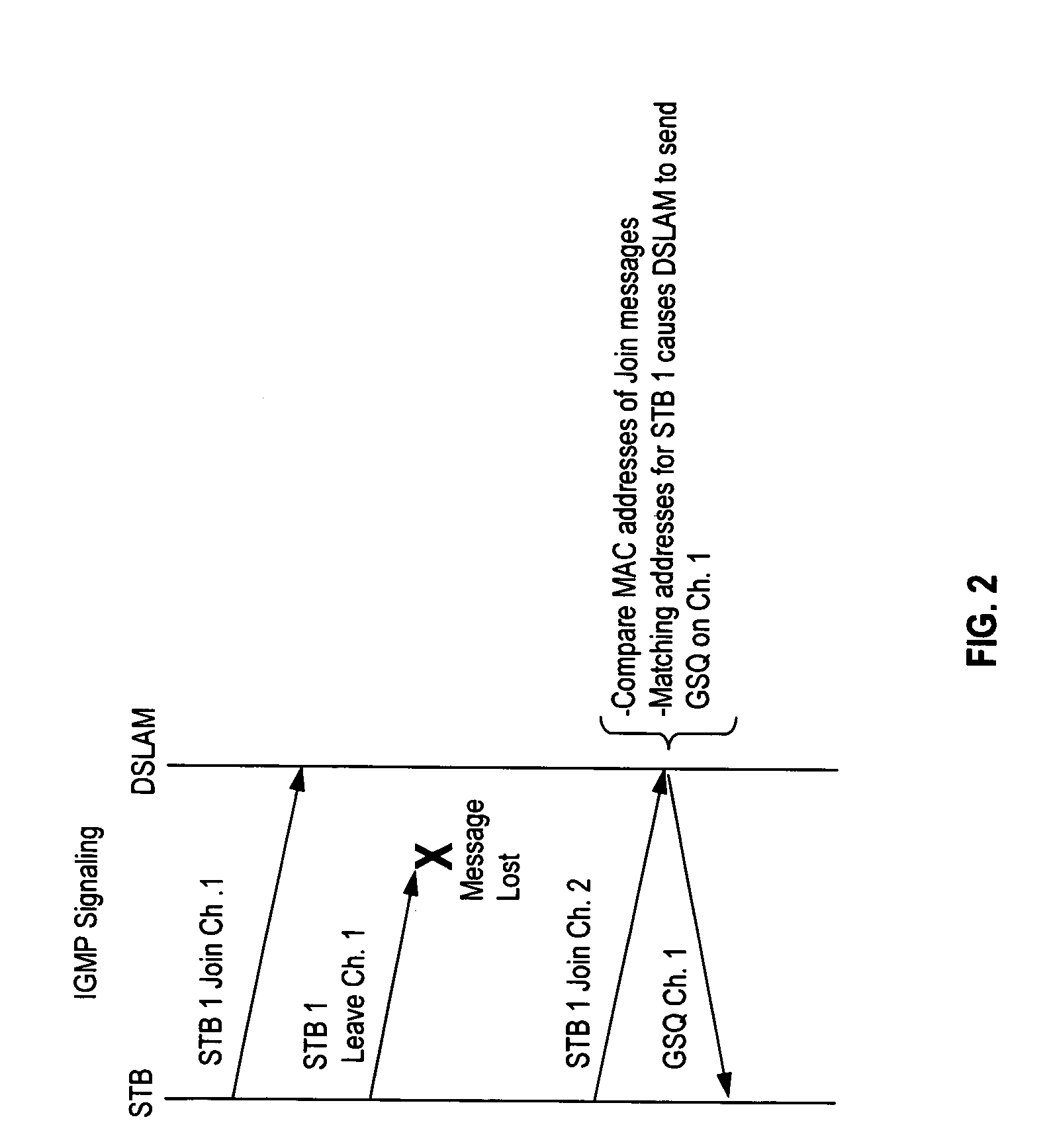Fast service restoration for lost IGMP leave requests
a fast service and leave request technology, applied in the field of lost igmp leave requests, can solve the problems of inability to wait 125 seconds, message loss, and limited communication link bandwidth, and achieve the effect of quick detection and respons
- Summary
- Abstract
- Description
- Claims
- Application Information
AI Technical Summary
Benefits of technology
Problems solved by technology
Method used
Image
Examples
Embodiment Construction
[0018]FIG. 1 shows a typical network architecture for multicasting video, or other high-speed services, in an internet protocol (IP) over an asynchronous transfer mode (ATM) (IPoATM) environment. Referring to FIG. 1, a video head end provides statically configured channels to a DSL access multiplexer (DSLAM) via an ATM network. The video channels are dynamically cross-connected to customer premise equipment (CPE) units as IP multicast video connections over ATM. Each CPE unit performs IPoATM to IP interfacing to provide IP multicasted video channels to one or more set-top boxes. Each STB sends IGMP messages to the DSLAM to effect certain actions, such as joining or leaving a multicast group. If any of the messages required for such actions are lost, e.g. a Group Leave message, then the action will be delayed until the loss is detected and corrective measures are taken.
[0019]FIG. 2 represents the IGMP messaging scenario between a STB and a DSLAM. Referring to FIG. 2, the STB 1 sends ...
PUM
 Login to View More
Login to View More Abstract
Description
Claims
Application Information
 Login to View More
Login to View More - R&D
- Intellectual Property
- Life Sciences
- Materials
- Tech Scout
- Unparalleled Data Quality
- Higher Quality Content
- 60% Fewer Hallucinations
Browse by: Latest US Patents, China's latest patents, Technical Efficacy Thesaurus, Application Domain, Technology Topic, Popular Technical Reports.
© 2025 PatSnap. All rights reserved.Legal|Privacy policy|Modern Slavery Act Transparency Statement|Sitemap|About US| Contact US: help@patsnap.com



